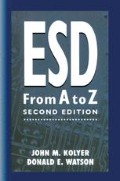Abstract
Despite several attempts to isolate a mAb specific for human dendritic cells, none currently exists. Recent attempts have utilized an improved dendritic cell purification method to prepare immunogens1 and a rapid two-color flow cytometric screening procedure that allows large numbers of hybridoma supernatants to be examined in each fusion2. Yet these improvements have also failed, yielding only hybridomas that bind “shared” antigens expressed by both dendritic cells and other leukocytes. Dendritic cells express many shared antigens, including CD45 [leukocyte common antigen], CD40, leukocyte [β2] integrins CD11a and CD11c, CD54 [ICAM-1], CD44 [Pgp-1], CD58 [LFA-3], and the B7/BB1 antigen. Therefore, we are attempting to bias the immune response toward rarer, dendritic cell-specific clones by tolerizing or immunosuppressing our animals to shared antigens.
In one approach, adult mice held in barrier cages are injected with “nondendritic” cells and cyclophosphamide [CP], in order to ablate responding “nonspecific” B cell clones. Fifteen days after the last dose of CP, they are challenged with nondendritic cells. A week later they are bled, and serum antibody titers against nondendritic cells are determined by FACS, in order to demonstrate tolerance compared to controls injected with CP alone.
In the second approach, neonatal mice are injected with human T lymphoblasts at birth, followed by boosting at 1 week. In adulthood, they are challenged sequentially with sheep erythrocytes [sRBC], then with T blasts, to demonstrate that they can respond to unrelated cells but not to tolerogenic cells. One week after each kind of challenge, mice are bled and serum antibody levels are determined for treated and sham-injected mice.
When these two approaches were compared, CP led only to nonspecific immunosuppression, while neonatal injections produced selective, antigen-specific nonresponsiveness to the tolerizing T blasts.
Access this chapter
Tax calculation will be finalised at checkout
Purchases are for personal use only
Preview
Unable to display preview. Download preview PDF.
References
P. S. Freudenthal and R. M. Steinman, The distinct surface of human blood dendritic cells, as observed after an improved isolation method, Proc. Natl. Acad. Sci. USA 87: 7698 (1990).
J. P. Metlay, M. D. Witmer-Pack, R. Agger, M. T. Crowley, D. Lawless, and R. M. Steinman, The distinct leukocyte integrins of mouse spleen dendritic cells as identified with new hamster monoclonal antibodies, J. Exp. Med. 171: 1753 (1990).
W. D. Matthew and P. H. Patterson, The production of a monoclonal antibody that blocks the action of a neurite outgrowth-promoting factor, Cold Spring Harbor Symp. Quant. Biol. 48: 625 (1983).
S. Hockfield, A mAb to a unique cerebellar neuron generated by immunosuppression and rapid immunization, Science 237: 67 (1987).
G. S. Golumbeski Jr. and R. L. Dimond, The use of tolerization in the production of monoclonal antibodies against minor antigenic determinants, Anal. Biochem. 154: 373 (1986).
S. K. Ou, C. McDonald, and P. H. Patterson, Comparison of two techniques for targeting the production of monoclonal antibodies against particular antigens, J. Immunological Methods 145: 111 (1991).
R. Schwartz and W. Dameshek, Drug-induced immunological tolerance, Nature 183: 1682 (1959).
W. D. Matthew and A. W. Sandrock Jr., Cyclophosphamide treatment used to manipulate the immune response for the production of monoclonal antibodies, J. Immunological Methods 100: 73 (1987).
C. V. Williams, C. L. Stechmann, and S. C. McLoon, Subtractive immunization techniques for the production of monoclonal antibodies to rare antigens, Biotechniques 12: 842 (1992).
M. C. Berenbaum, Immunology. A screen for agents inhibiting the immune response and the growth of tumours, Nature 196: 384 (1962).
R. Hanan and J. Oyama, Inhibition of antibody formation in mature rabbits by contact with the antigen at an early age, J. Immunol. 73: 49 (1954).
F. J. Dixon and P. H. Maurer, Immunologic unresponsiveness induced by protein antigens, J. Exp. Med. 101: 245 (1954).
R. T. Smith and R. A. Bridges, Immunological unresponsiveness in rabbits produced by neonatal injection of defined antigens, J. Exp. Med. 108: 227 (1958).
R. E. Billingham, L. Brent, and P. B. Medawar, “Actively acquired tolerance” of foreign cells, Nature 172: 603 (1953).
Author information
Authors and Affiliations
Editor information
Editors and Affiliations
Rights and permissions
Copyright information
© 1993 Plenum Press, New York
About this chapter
Cite this chapter
O’Doherty, U. et al. (1993). Tolerizing Mice to Human Leukocytes: A Step Toward the Production of Monoclonal Antibodies Specific for Human Dendritic Cells. In: Kamperdijk, E.W.A., Nieuwenhuis, P., Hoefsmit, E.C.M. (eds) Dendritic Cells in Fundamental and Clinical Immunology. Advances in Experimental Medicine and Biology, vol 329. Springer, New York, NY. https://doi.org/10.1007/978-1-4615-2930-9_28
Download citation
DOI: https://doi.org/10.1007/978-1-4615-2930-9_28
Publisher Name: Springer, New York, NY
Print ISBN: 978-1-4613-6272-2
Online ISBN: 978-1-4615-2930-9
eBook Packages: Springer Book Archive

